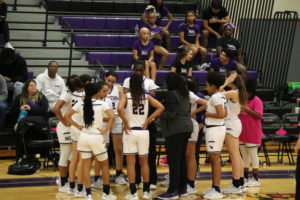Original: February 22, 2011 Issue 11
By: Alexandra Weidt
Staff Writer

“OMG so Marc just tweeted that Joe befriended Lindsay on facebook last night” ”Seriously? I totally have to retweet that to all of my contacts!” This could be a typical conversation between two average, maybe slightly superficial, teenage girls.
Social networks and websites such as Twitter, Facebook and You Tube have changed the way we communicate. Twitter has gained more and more importance. Since it started in 2006 as a kind of free online diary for everyone to read, a website offering micro-blogging and social networking services. But soon people discovered many other ways to use it effectively.
These text messages, limited to 140 characters, enable quick communication, free marketing and lately those networks even have even helped change the world as everyone is watching the revolutionary movements in Tunisia and Egypt. But will they also revolutionize our education?
Using twitter as a teaching tool sounds experimental at first, but there are many ways to efficiently improve a student’s everyday life in class by adding Twitter to other more common teaching methods. First, and probably most obvious, this platform offers a direct, quick and easy connection between student and professor.
Similar to a virtual blackboard, students have the chance to quickly ask their professors about class contents plus professors get to post announcements, reminders or schedule changes. Beyond that, Twitter is being used to evaluate teaching quality through quick opinion polls after each class. The limited number of characters makes this kind of feedback short and concise. But not only feedback is limited. Using twitter for continued class discussions, forces students to be brief in their answers and to the point.
Therefore they may learn to communicate more effectively. Within these carried-on discussions students also get the opportunity to reflect on connections they notice between the studied material and their own “real world”.
For example if students experience, maybe they read something that reminds them of the class content, they can quickly communicate that with fellow students on Twitter.
Therefore using a social network like Twitter in an academic setting fosters interaction about a given topic, which will benefit the student’s ability to comprehend as well as reflect. Furthermore there are different ways to engage students via Twitter. Interesting for language learner: A professor tweets in foreign language and asks students to respond in that language.
Another possible task could be the so-called Twitter stalking, where students are asked to follow certain famous person from politics or economy for example and document their process. In a more group oriented note, using twitter within the classroom also creates a sense of community. Students get to know each other across their various tweets, which benefits the classroom dynamics.
Besides these upsides for a successful student-to-teacher as well as student to student communication, there is always the question of practicability. Firstly all these options premise that all students have an account on Twitter and access to a computer at all times. Best case scenario the account is linked to a mobile device with internet access, since otherwise there are only a few advantages to using facebook or even the university network.
The use of Twitter within the classroom can engage students other than just listening to an instructor and taking notes. Therefore you might want to consider following your professors on Twitter to stay up to date with all assignments at all times.


















